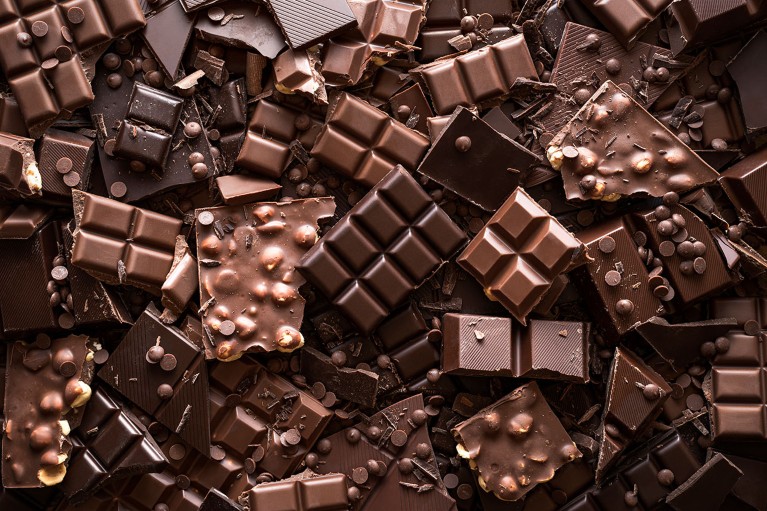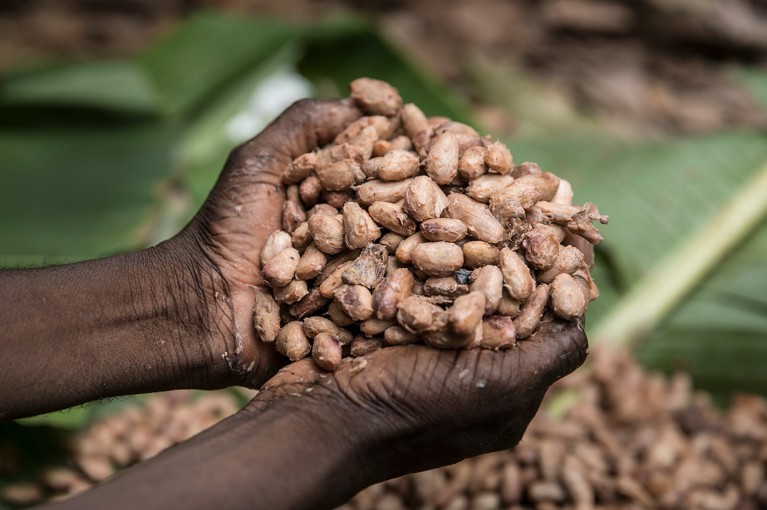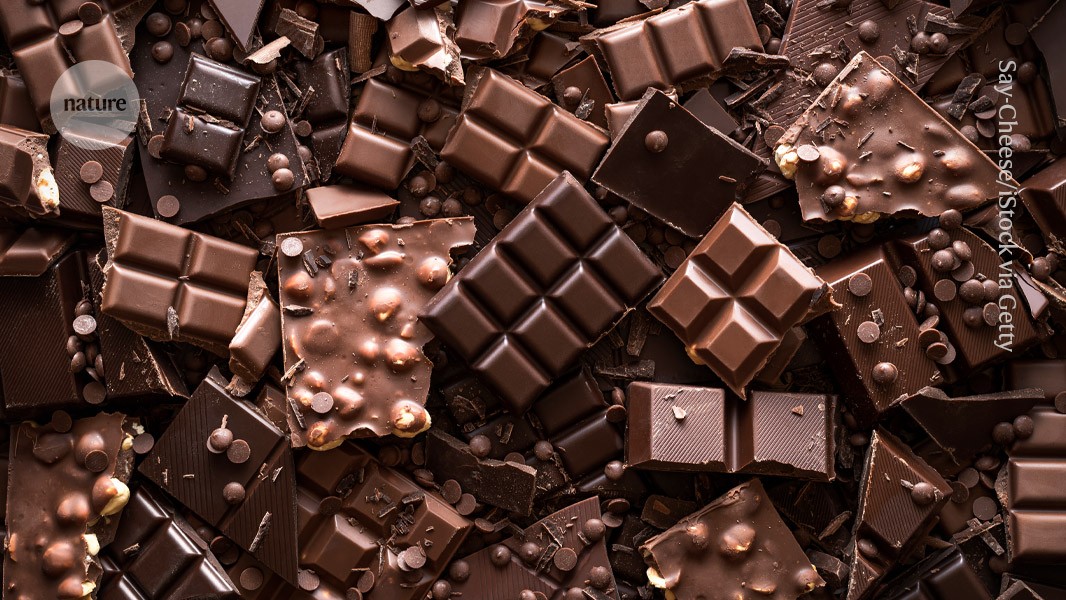
Manipulating microbes involved in the fermentation of cocoa beans could lead to the creation of exciting new flavours of chocolate. Credit: Say-Cheese/iStock via Getty
When you bite into a piece of chocolate, you can taste its distinct fruity, nutty and earthy flavours.
Now, scientists have gained fresh insights into how the process of fermenting cocoa beans can affect that flavour profile.
In a study published today in Nature Microbiology1, researchers found that pH, temperature and microbial species in the fermentation process all influence how the resulting chocolate tastes. They also replicated the flavour attributes of a high-quality chocolate in the laboratory by creating the ideal environment for fermentation.
The researchers hope that using these techniques will “create novelty and exciting new flavours for consumers in the future”, says study co-author David Gopaulchan, a plant geneticist at the University of Nottingham, UK.
“I think this definitely has promise for people to start to play with and look at in terms of designer chocolates”, says Heather Hallen-Adams, a food scientist at the University of Nebraska–Lincoln.
Fermented flavours
Fermentation is a flavour-enhancing step in the production of some foods and drinks. Making wine, cheese or beer involves adding yeast or other microorganisms. To make chocolate, cocoa beans are removed from their pods, put together and left to ferment, after which they are dried and roasted. But unlike production of wine, beer and cheese, cacao fermentation is a natural process that usually takes place without adding specific microbes. As a result, little is known about how different conditions or microbe species might influence the flavour of chocolate.
“Ultimately, what we are trying to do is increase the quality of chocolates,” says Gopaulchan. His team took samples of cocoa beans from a farm in the Santander district of Colombia and measured changes in the pH and temperature during the fermentation process. They suspected that these conditions would affect the chocolate’s flavour, because of how they influenced interactions between bacteria and fungi.

Raw cocoa beans must undergo fermentation before they can be made into chocolate.Credit: Ute Grabowsky/Photothek via Getty
The researchers then compared cocoa samples from the Santander district with those from farms in the Huila and Antioquia regions of Colombia. They prepared cocoa ‘liquors’ from the fermented beans from the three farms to test their flavour profiles. This process involves drying, roasting and breaking down the beans to produce cocoa nibs, which are ground into a paste.
A panel of trained food tasters sampling the liquors reported that those from Santander and Huila shared flavour attributes, with notes of roasted nuts, ripe berries and coffee. By comparison, cocoa liqour from Antioquia had a simpler, more bitter flavour. The cocoa from all three farms had similar genetic backgrounds, which allowed the researchers to exclude genotype as a factor influencing flavour.
Analysis of the fermentation conditions from the three farms found that unique microbial communities influenced the flavour profiles of the three cocoa liquors. For example, the fungal genera Torulaspora and Saccharomyces were strongly associated with flavour attributes of finer chocolate.


